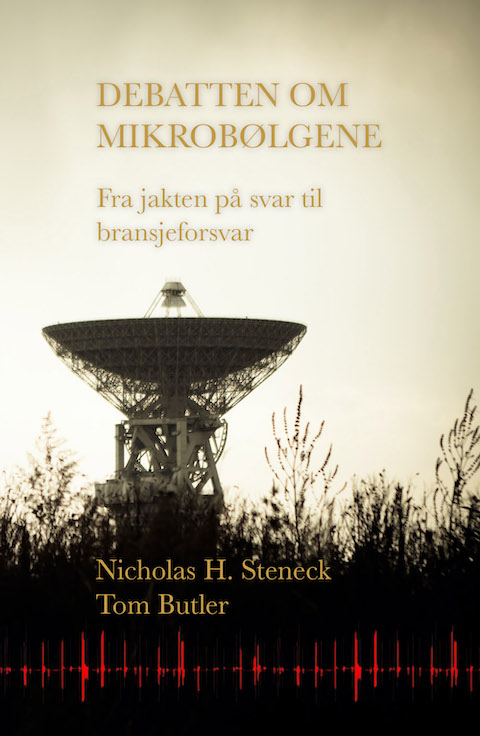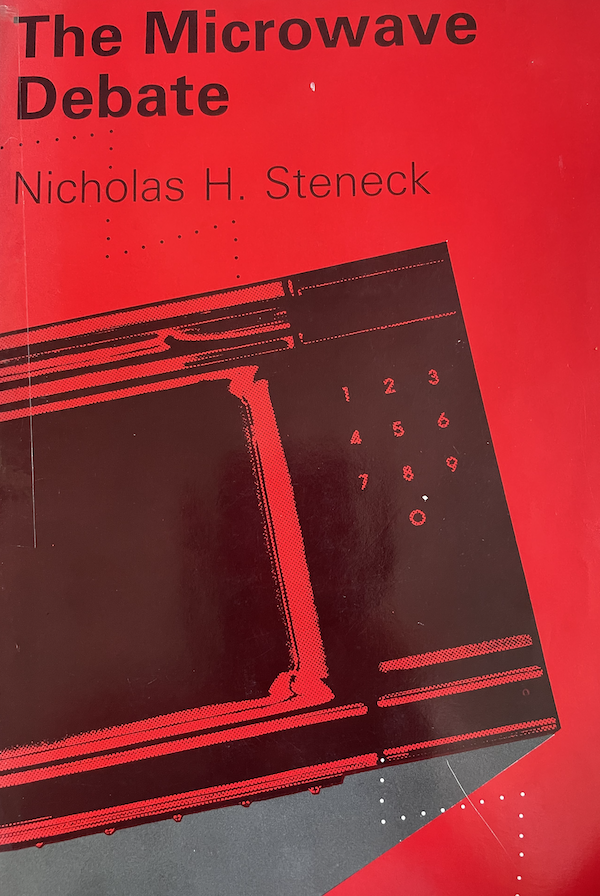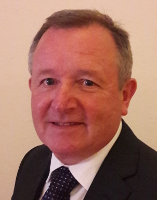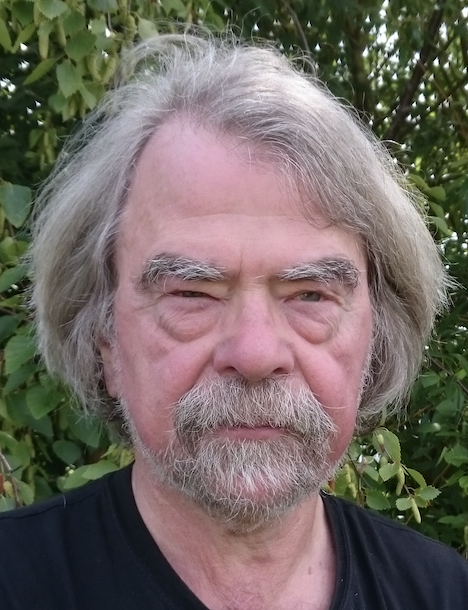2022 Short Takes
ANSES, the French Agency for Food, Environmental and Occupational Health and Safety, has issued a request for proposals for studies on RF radiation. Topics under study are:
- Mechanisms of action at molecular & cellular level;
- Physiological & health effects;
- EM hypersensitivity;
- Exposure characterization.
Letters of intent are due by January 17, 2023. Selected projects will be announced in September.
Further details:
- Full RfP.
- Press release.
Next week, ANSES and IARC are hosting a one-day workshop on RF and health in Paris.
Is This a Substitute for IARC’s RF Cancer Reassessment?
Two influential health agencies, both based in France, will host a one-day meeting on RF–health research, November 23 in Paris. The public is invited to attend in person or online. Registration is free.
The conference, organized by ANSES, the French Agency for Food, Environmental and Occupational Health & Safety, and IARC, the International Agency for Research on Cancer, will focus on potential effects of RF radiation on the brain and on cancer risks. The theme is “Research in a Fast-Moving Environment.”
Among the scheduled speakers are: Giuseppe Curcio of the University of L'Aquila (Italy), Isabelle Deltour and Joachim Schüz of IARC in Lyon, Emilie van Deventer of the WHO in Geneva, Joe Wiart formerly of France Telecom (now Orange) and Wout Joseph of Ghent University (Belgium).
The provisional agenda is here.
IARC Skeptical of RF–Brain Tumor Link
The two sponsors do not necessarily share a common outlook on RF health risks.
In 2011, a panel assembled by IARC classified RF radiation as a possible human (2B) carcinogen. That decision was based on epidemiological studies which found more brain tumors among long-term phone users. But, for now many years, Deltour and Schüz have been openly skeptical that those links are real. Schüz is the head of IARC’s Environment and Lifestyle Epidemiology Branch.
Their latest effort comes in an open access paper published in August by Environment International. There they argue that the increased risks are “implausible” —in effect, challenging the legitimacy of the 2B designation.
Among their coauthors are Sweden’s Maria Feychting and Denmark’s Christoffer Johansen. They too have long doubted the cancer risk.
For more on how this has been playing out, see “IARC and RF: What’s Next?”
ANSES Favors Precaution
ANSES, on the other hand, appears to be far more cautious about discounting risks.
The agency has published numerous health reports on RF radiation over the last 20 years. In 2019, for instance, it recommended precautionary steps to limit radiation exposures from mobile phones. ANSES advised not carrying mobile phones in shirt or trouser pockets, where they would be flush to the body, that is with no separation distance allowing greater radiation absorption.
Most recently —in the spring of last year— ANSES issued an “Opinion” stating that 5G systems in the 3.5 GHz frequency band were “unlikely” to pose any new health risks. It cautioned, however, that there were not enough data on the 26 GHz band (millimeter waves) to allow drawing any conclusions.
More on ANSES’ RF reports, released 2003-2016, here.
Will IARC Reassess the RF Cancer Risk?
In 2019, following the release of the NTP and Ramazzini RF–animal studies showing increased tumor counts after long-term exposure, IARC was urged by one of its own advisory committees to convene a new panel to reassess that “2B” classification. More than a few interpreted this as a call for an upgrade to “2A”, that is, RF would become a probable human carcinogen.
The committee asked that this second look be done sometime between 2022 and 2024.
IARC itself has been silent on whether it is acting on that recommendation.
A new evaluation has not been scheduled, Véronique Terrasse, a communication aide to Elisabete Weiderpass, the Director of IARC, told Microwave News earlier this month. Weiderpass will give opening remarks at the November RF conference.
The question, some people are now asking, is whether the November conference is a substitute —temporary or otherwise— for an indepedent IARC reassessment of RF cancer risks.
Forty Years Later, Not Much Has Changed
A Challenge to ICNIRP
Close to 40 years after its first publication, The Microwave Debate, Nicholas Steneck’s history of research and regulation of microwave health effects, is back in print —this time in Norwegian.
The new translation comes with an epilogue by Thomas Butler, a professor at Ireland’s Cork University Business School, who has contributed seven chapters —about 30,000 words— to bring Steneck’s history up to the present.
The centerpiece of Steneck’s story is how the microwave exposure limit, known as the 10 milliwatt or Schwan standard, came about in the mid-1950s and continued to hold sway for decades. A four-member team, led by Steneck, published “The Origins of the U.S. Safety Standards for Microwave Radiation” in Science magazine in 1980.
Butler continues this thread with a focus on how the standard evolved after 1984, and the parts played by ICNIRP, the IEEE and the FCC.
The translation is the brainchild of Einar Flydal, formerly with Telenor, a telecom conglomerate serving the Nordic and many other countries. He has also been a consultant to the Norwegian Ministry of Education and an adjunct professor at the Norwegian University of Science & Technology (NTNU). After retiring in 2011, Flydal turned to speaking and blogging on EMF/RF health issues, including dirty electricity, smart meters, and most recently 5G. He lives in Oslo.


The Norwegian (2022) and the original U.S. (1984) editions
Asked why he had undertaken the translation, Flydal explained that as he was digging into EMF history he became fascinated by the work of Robert Becker and Andrew Marino, two biophysicists who, separately and together, wrote a number of books. Becker’s The Body Electric, which came out in 1985, a year after Steneck’s Debate, is considered a classic. It’s still in print.
Along the way, Flydal spotted a reference to The Microwave Debate and how it offered details on the origin of the U.S. exposure limit. Last year, he located a copy in a second-hand bookstore in San Diego. “I quickly realized that while it may be out of print, it’s not out of date,” Flydal told me. “I then spent most of the winter translating.” He also reached out to Butler, who, like himself, is highly critical of ICNIRP: Butler has described the Commission as carrying the torch “to protect the thermal view.”
Flydal said that the translation was worth the effort. The potential audience is larger than one might assume, he explained. “All Scandinavians can read Norwegian —although Swedes and Danes find it a bit odd. Icelanders can too.” (The total population of these four countries is over 22 million.)


Tom Butler Einar Flydal
Unlike Steneck, who presents a largely neutral description of microwave history, Butler is an advocate for change. He sees what has transpired over the last 40 years as ample grounds for a new approach, one that does not include ICNIRP.
ICNIRP: “An Immoral Group”
“In my opinion,” Butler stated in an email from Cork, “ICNIRP is an immoral group of scientists who knowingly distort scientific truth to protect industry interests over the public good.” He added: “Given the weight of evidence on oxidative stress, and the ubiquity of wireless devices in homes, we may be looking at an increase in chronic and systemic illnesses.” Butler describes himself as a social scientist and technologist.
Flydal’s new book has received an improbable endorsement from Lars Klæboe of the Norwegian Radiation Protection Authority. He calls it a “formidable effort.” This blurb on the back cover is surprising in the ever-polarized world of RF and health. Klæboe, a member of the original Interphone study group, is skeptical of RF health risks. He has long worked with Maria Feychting, a former vice chair of ICNIRP, and Joachim Schüz of IARC, two other skeptics.
Butler is planning a “much slimmed down” version of his epilogue, some 8,000 words, for publication in an English-language journal.
Neither Butler nor Flydal is a stranger to the political machinations of the RF world —and of course there’s a lot about that in Steneck’s book.
A couple of years ago, Butler filed a complaint against the Irish Times after the newspaper reprinted an article from the New York Times: “The 5G Health Hazard That Isn’t,” by William Broad. Butler charged that Broad had distorted the facts and the Irish Press Ombudsman agreed. The NY Times shrugged it off. (More on Broad’s distortions here: “A Fact Free Hit on a 5G Critic.”)
Flydal recently published —with Else Nordhagen— an analysis showing that ICNIRP’s 2020 RF/MW exposure limits are based on scientific reviews by a small clique, most of whose members have close ties to ICNIRP itself (they call this “self-referencing authorships”). Nordhagen and Flydal detail how Their paper was posted by Reviews on Environmental Health on June 27.
Steneck was a history professor at the University of Michigan in Ann Arbor when the Microwave Debate was published in 1984. After becoming emeritus, he became a consultant in the field of scientific integrity.
I asked Steneck for some thoughts about where the Debate stands today. Here’s part of what he told me:
“In the book, I showed that science was influenced by values and politics, but that message was not accepted. So now, 40 years later, we are still relying on ‘science’ to make decisions, not realizing or admitting that the RF field is plagued by the same problems that existed in the 1980s. When contacted about the translation, I was pleased to know that some understood and appreciated what drives and shapes the research we use to set policies. I am not optimistic that this new translation and update will make much of a difference. Today’s social media generation will not tolerate any limitation of 5G.”
_______________________
Debatten on Mikrobølgene is available online and in local bookstores with a list price of 460 NOK (US$45), though Flydal says it can usually be had for 410 NOK ($40).
